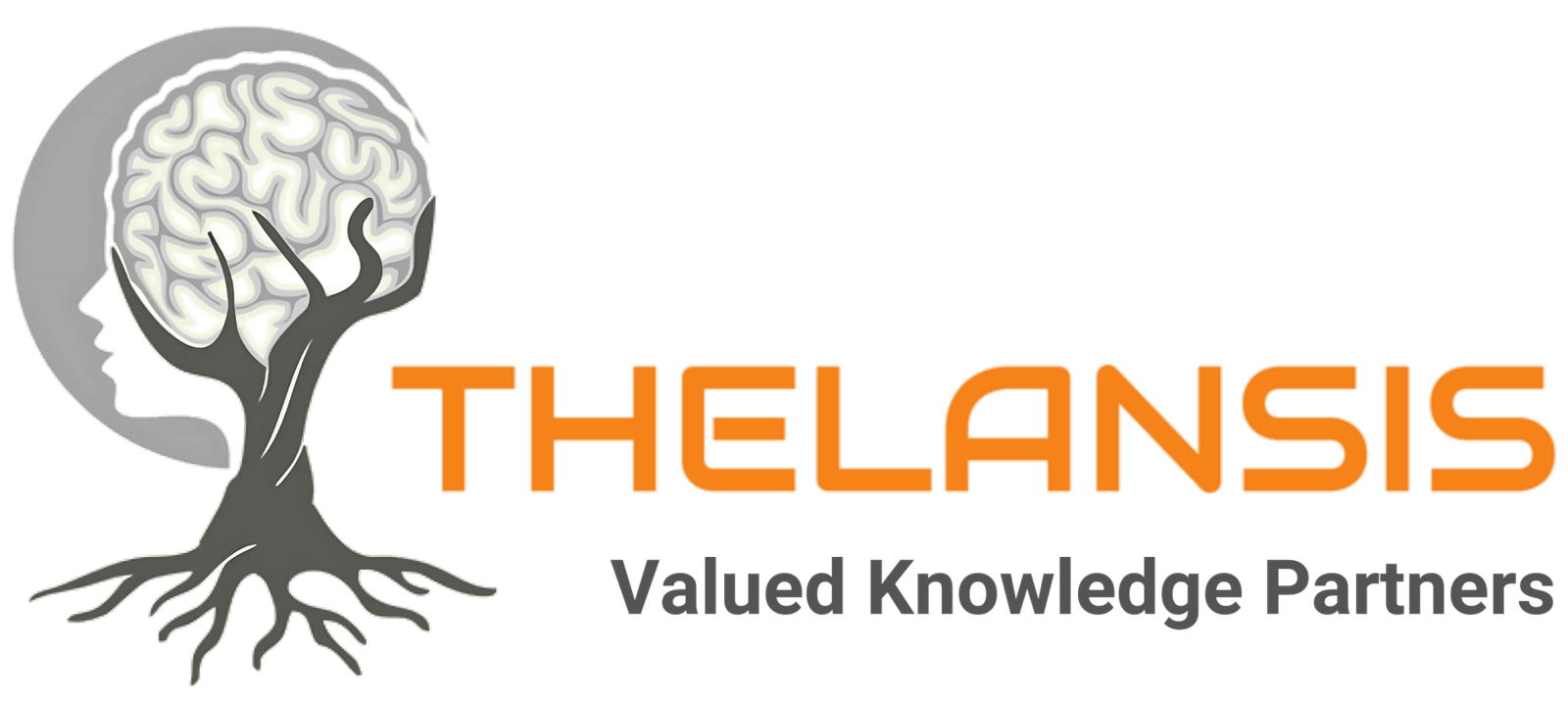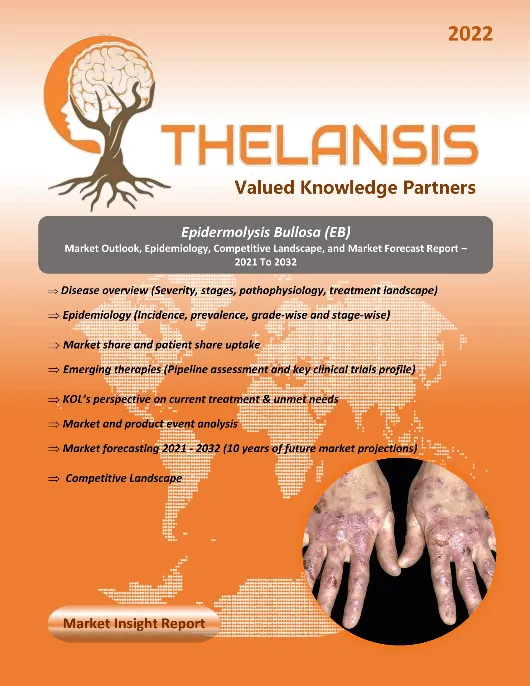Hurler Syndrome (Mucopolysaccharidosis Type I) – Market Outlook, Epidemiology, Competitive Landscape, and Market Forecast Report – 2024 To 2034
- Published Date : November 21, 2024
- Updated On : August 18, 2025
- Pages : 153
Hurler Syndrome (Mucopolysaccharidosis Type I) Market Outlook
Thelansis’s “Hurler Syndrome (Mucopolysaccharidosis Type I) Market Outlook, Epidemiology, Competitive Landscape, and Market Forecast Report – 2024 To 2034” covers disease overview, epidemiology, drug utilization, prescription share analysis, competitive landscape, clinical practice, regulatory landscape, patient share, market uptake, market forecast, and key market insights under the potential Hurler Syndrome (Mucopolysaccharidosis Type I) treatment modalities options for eight major markets (USA, Germany, France, Italy, Spain, UK, Japan, and China).
Hurler Syndrome (Mucopolysaccharidosis Type I) Overview
Mucopolysaccharidosis type I (MPS I), also known as Hurler syndrome, is a genetic disorder that affects multiple organ systems. It is caused by mutations in the IDUA gene, leading to a deficiency or complete absence of the alpha-L-iduronidase enzyme. Without this enzyme, large sugar molecules called glycosaminoglycans (GAGs) accumulate within lysosomes, resulting in cellular dysfunction and enlargement of various organs and tissues, which underlie the clinical manifestations of the disease. The onset of symptoms typically occurs between infancy and early childhood. The severity and progression of MPS I can vary widely, ranging from severe, life-threatening complications that may lead to death in the first or second decade of life, to a more attenuated form with a longer but significantly impaired lifespan due to progressive joint stiffness and cardiorespiratory complications. Hematopoietic stem cell transplantation (HSCT) is one available treatment option that can improve cognitive outcomes, increase survival, support growth, reduce facial coarseness and hepatosplenomegaly, enhance hearing, prevent hydrocephalus, and modify the progression of cardiac and respiratory symptoms.
Geography coverage:
G8 (United States, EU5 [France, Germany, Italy, Spain, U.K.], Japan, and China)
Insights driven by robust research, including:
- In-depth interviews with leading KOLs and payers
- Physician surveys
- RWE analysis for claims and EHR datasets
- Secondary research (e.g., peer-reviewed journal articles, third-party research databases)
Deliverables format and updates*:
- Detailed Report (PDF)
- Market Forecast Model (MS Excel-based automated dashboard)
- Epidemiology (MS Excel; interactive tool)
- Executive Insights (PowerPoint presentation)
- Others: regular updates, customizations, consultant support
*As per Thelansis’s policy, we ensure that we include all the recent updates before releasing the report content and market model.
Salient features of Market Forecast model:
- 10-year market forecast (2024–2034)
- Bottom-up patient-based market forecasts validated through the top-down sales methodology
- Covers clinically and commercially-relevant patient populations/ line of therapies
- Annualized drug-level sales and patient share projections
- Utilizes our proprietary Epilansis and Analog tool (e.g., drug uptake and erosion) datasets and conjoint analysis approach
- Detailed methodology/sources & assumptions
- Graphical and tabular outputs
- Users can customize the model based on requirements
Key business questions answered:
- How can drug development and lifecycle management strategies be optimized across G8 markets (US, EU5, Japan, and China)?
- How large is the patient population in terms of incidence, prevalence, segments, and those receiving drug treatments?
- What is the 10-year market outlook for sales and patient share?
- Which events will have the greatest impact on the market’s trajectory?
- What insights do interviewed experts provide on current and emerging treatments?
- Which pipeline products show the most promise, and what is their potential for launch and future positioning?
- What are the key unmet needs and KOL expectations for target profiles?
- What key regulatory and payer requirements must be met to secure drug approval and favorable market access?
- and more…
Hurler Syndrome (Mucopolysaccharidosis Type I) Market Outlook
Thelansis’s “Hurler Syndrome (Mucopolysaccharidosis Type I) Market Outlook, Epidemiology, Competitive Landscape, and Market Forecast Report – 2024 To 2034” covers disease overview, epidemiology, drug utilization, prescription share analysis, competitive landscape, clinical practice, regulatory landscape, patient share, market uptake, market forecast, and key market insights under the potential Hurler Syndrome (Mucopolysaccharidosis Type I) treatment modalities options for eight major markets (USA, Germany, France, Italy, Spain, UK, Japan, and China).
Hurler Syndrome (Mucopolysaccharidosis Type I) Overview
Mucopolysaccharidosis type I (MPS I), also known as Hurler syndrome, is a genetic disorder that affects multiple organ systems. It is caused by mutations in the IDUA gene, leading to a deficiency or complete absence of the alpha-L-iduronidase enzyme. Without this enzyme, large sugar molecules called glycosaminoglycans (GAGs) accumulate within lysosomes, resulting in cellular dysfunction and enlargement of various organs and tissues, which underlie the clinical manifestations of the disease. The onset of symptoms typically occurs between infancy and early childhood. The severity and progression of MPS I can vary widely, ranging from severe, life-threatening complications that may lead to death in the first or second decade of life, to a more attenuated form with a longer but significantly impaired lifespan due to progressive joint stiffness and cardiorespiratory complications. Hematopoietic stem cell transplantation (HSCT) is one available treatment option that can improve cognitive outcomes, increase survival, support growth, reduce facial coarseness and hepatosplenomegaly, enhance hearing, prevent hydrocephalus, and modify the progression of cardiac and respiratory symptoms.
Geography coverage:
G8 (United States, EU5 [France, Germany, Italy, Spain, U.K.], Japan, and China)
Insights driven by robust research, including:
- In-depth interviews with leading KOLs and payers
- Physician surveys
- RWE analysis for claims and EHR datasets
- Secondary research (e.g., peer-reviewed journal articles, third-party research databases)
Deliverables format and updates*:
- Detailed Report (PDF)
- Market Forecast Model (MS Excel-based automated dashboard)
- Epidemiology (MS Excel; interactive tool)
- Executive Insights (PowerPoint presentation)
- Others: regular updates, customizations, consultant support
*As per Thelansis’s policy, we ensure that we include all the recent updates before releasing the report content and market model.
Salient features of Market Forecast model:
- 10-year market forecast (2024–2034)
- Bottom-up patient-based market forecasts validated through the top-down sales methodology
- Covers clinically and commercially-relevant patient populations/ line of therapies
- Annualized drug-level sales and patient share projections
- Utilizes our proprietary Epilansis and Analog tool (e.g., drug uptake and erosion) datasets and conjoint analysis approach
- Detailed methodology/sources & assumptions
- Graphical and tabular outputs
- Users can customize the model based on requirements
Key business questions answered:
- How can drug development and lifecycle management strategies be optimized across G8 markets (US, EU5, Japan, and China)?
- How large is the patient population in terms of incidence, prevalence, segments, and those receiving drug treatments?
- What is the 10-year market outlook for sales and patient share?
- Which events will have the greatest impact on the market’s trajectory?
- What insights do interviewed experts provide on current and emerging treatments?
- Which pipeline products show the most promise, and what is their potential for launch and future positioning?
- What are the key unmet needs and KOL expectations for target profiles?
- What key regulatory and payer requirements must be met to secure drug approval and favorable market access?
- and more…
1. Key Findings and Analyst Commentary
- Key trends: market snapshots, SWOT analysis, commercial benefits and risk, etc..
2. Disease Context
- Disease definition, classification, etiology and pathophysiology, drug targets,etc.
3. Epidemiology
- Key takeaways
- Incidence / Prevalence
- Diagnosed and Drug-Treated populations
- Comorbidities
- Other relevant patient segments
4. Market Size and Forecast
- Key takeaways
- Market drivers and constraints
- Drug-class specific trends
- Country-specific trends
5. Competitive Landscape
- Current therapies
- Key takeaways
- Dx and Tx journey/algorithm
- Key current therapies – profiles and KOL insights
- Emerging therapies
- Key takeaways
- Notable late-phase emerging therapies – profiles, launch expectations, KOL insights
- Notable early-phase pipeline
6. Unmet Need and TPP Analysis
- Top unmet needs and future attainment by emerging therapies
- TPP analysis and KOL expectations
7. Regulatory and Reimbursement Environments (by country and payer insights)
8. Appendix (e.g., bibliography, methodology)
Table of contents (TOC)
1. Key Findings and Analyst Commentary
- Key trends: market snapshots, SWOT analysis, commercial benefits and risk, etc..
2. Disease Context
- Disease definition, classification, etiology and pathophysiology, drug targets,etc.
3. Epidemiology
- Key takeaways
- Incidence / Prevalence
- Diagnosed and Drug-Treated populations
- Comorbidities
- Other relevant patient segments
4. Market Size and Forecast
- Key takeaways
- Market drivers and constraints
- Drug-class specific trends
- Country-specific trends
5. Competitive Landscape
- Current therapies
- Key takeaways
- Dx and Tx journey/algorithm
- Key current therapies – profiles and KOL insights
- Emerging therapies
- Key takeaways
- Notable late-phase emerging therapies – profiles, launch expectations, KOL insights
- Notable early-phase pipeline
6. Unmet Need and TPP Analysis
- Top unmet needs and future attainment by emerging therapies
- TPP analysis and KOL expectations
7. Regulatory and Reimbursement Environments (by country and payer insights)
8. Appendix (e.g., bibliography, methodology)


